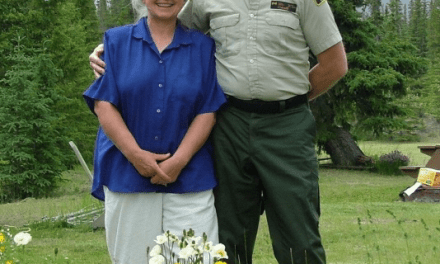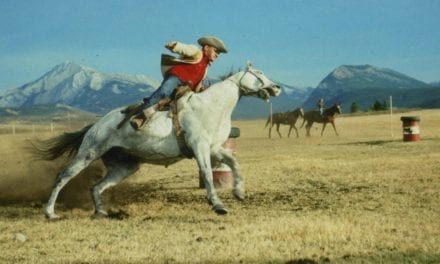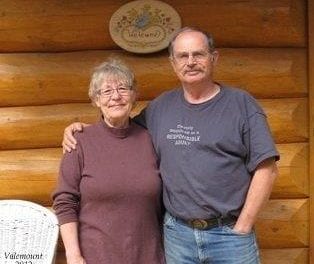Thank you to the Whyte Museum of the Canadian Rockies for granting permission to the Park Warden Service Alumni to post this interview on our website
Interview by with Tom Davidson, Feb. 28th, 2019 Park Warden Alumni Society of Alberta
Interview conducted by Mary Dalman Oral History Project – winter 2019.
Introduction: Tom was born in Southern Alberta and spent his early years growing up in the town of Waterton. Although his family moved to Calgary when he was in his early teens, Tom returned to Waterton every summer and holiday. His father had worked for Waterton Lakes National Park before moving to Calgary. Tom’s interest in national parks was sparked by his experiences in a scouting program offered in Waterton. The program provided guidance by park wardens and park naturalists who influenced Tom to pursue a career as a park warden. Tom gained experience in the park working on a maintenance crew and fire tower. His career as a park warden started in 1973 in Waterton Lakes National Park. Tom worked in the mountain parks – Jasper and Banff. He retired in 2007 after 37 years in the warden service. Having gained substantial knowledge in bear management Tom has been involved in the Aversive Conditioning program for Kananaskis Country as well as other bear management and safety programs in the North.
MD: This is an interview with Tom Davidson, at Mary’s home in Canmore, Alberta. It’s February 28th, 2019. Hi Tom, thanks a lot for doing this.
Tom: Hi, You’re welcome.
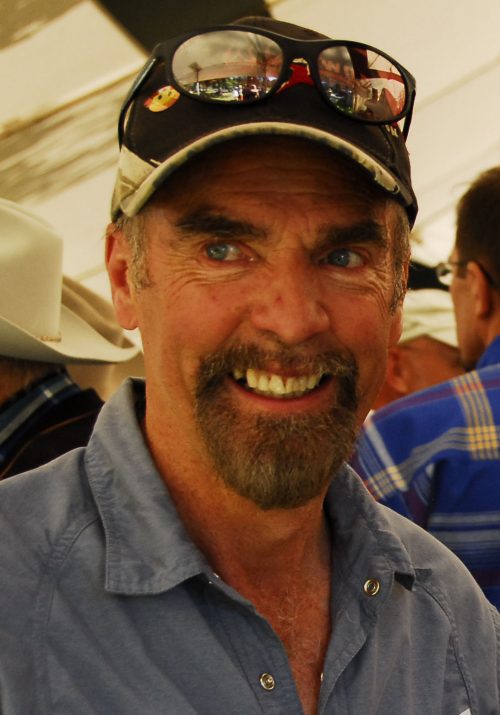
MD: Could you tell us your place and date of birth?
Tom: Yes, Born in southern Alberta, so I haven’t moved too far away. Born in Lethbridge, 1949. We were living in the park at that time in Waterton. My father grew up in Lethbridge, so his family was there and my mother grew up in Waterton, so that’s how that happened.
MD: So you were born right in the park then?
Tom: No – in Lethbridge. And my Dad’s parents lived there.
MD: Where did you grow up?
Tom: Younger years, grew up right in Waterton, right in the Park (Waterton Lakes National Park) so went to the old school there, there’s a two-room school, and they had up to Grade 4 in one room, and then other grades up to Grade 7 or 8, 7 I think, in the other side, so they had two teachers. So grew up there in my younger years, and my Dad worked for the Park as an equipment operator. He got into crane operating, and in junior high, we moved up to Calgary, and he got a job for more money with private companies, realized there was more money to be had there than with fooling around in the park.
MD: So how old were you when you moved up to Calgary?
Tom: Junior high, so I don’t remember exactly – Grade 7. So fairly young – I went back to Waterton every summer and every holiday. That’s kind of where my roots were and loved being in the mountains. When I was old enough, I got on with Parks with maintenance at 18, and had different jobs in the maintenance function, town crew, golf course and on the Fire Tower. Spent every summer back in Waterton.
MD: It must have been great being a little kid in Waterton.
Tom: Yes, I still had grandparents there. Delance Strate was my grandfather, on my mother’s side of the family. He homesteaded about 30 miles out of Waterton. In the 30s, they moved to Waterton Park. Delance Strate was a good friend of Kootenai Brown. My grandparents lived on the back street, and also an uncle and aunt, and cousins there – a cousin the same age roughly, so we kicked around and knew all the guys there. The (old) school is still standing and they’ve kept it up, and they use it for various functions. Before I left, they actually added a gymnasium onto it. There was nothing like that in Waterton at that time. They use it for various activities. I don’t think the school is active as a school anymore, not sure when they last had school classes there.
MD: I love that little townsite – especially in the off-season.
Tom: Yes, that’s the time to be there. They usually get some really nice weather in the spring, and it used to be quiet – same as the parks up here were before July it was quiet, and then September it was quiet, but now there’s quite a shoulder season both in the spring and the fall.
MD: How did you become involved in the Warden Service?
Tom: They had quite a scouting program in Waterton, and there were a few of the park wardens that helped with that, and took us on trips. Those who ran the program for many years were Frank Goble and also Frances Folmer who helped with cubs. (Miss Folmer was the elementary grade teacher). Frank Goble was a local resident and early oldtimer in Waterton. Also one of naturalists at the time (Frank Sudall), as well, took us in summer, we tagged along on hikes with him up into the backcountry in the lakes and various trails.
MD: Who was that?
Tom: That was Frank Sudall, who was a Park Naturalist at the time. I think he did only a couple of summers of being the naturalist, and he taught one winter in the school, then he moved away. Some of the wardens of the day helped with a lot of it – Larry Tremblay was one, and Jack Christensen and others. That sparked my interest for National Parks, and thought, that’s what – I’ll give it a try. Actually I was lucky enough to get on fairly readily, because after the maintenance, I worked in the fire tower. I was probably the last guy to work in the fire tower towards Chief Mountain, up the Chief Mountain Road.
MD: Is the fire tower right in the park?
Tom: It was in the park, had a little cabin at it, I think the tower and cabin have now been removed. Also I worked on the Conservation Corps, the first year that program started up. Myself, and Dave Carnell worked on the program, both trying to get on with the Warden Service. Dave would be a good guy to interview. He grew up in Waterton as well, and he got a full-time job right away in Jasper. He lives down by Millarville right now.
MD: So you started working right away in Waterton, then?
Tom: I did – I got on with the Warden Service in Waterton in ’73, and had a 6-month position there. I had gone to Lethbridge College, and then was planning to go to Missoula to University down there, and then they gave me this 6-month position, so I talked myself out of going. I’m sure they could have found someone else. So that’s one thing I should have done. Anyway, two years there (at Waterton), and then I moved on – I got a full-time job in Jasper in ’75, and then transferred down in ’81 from Jasper to Banff. So I only worked in the mountains, and in Alberta. I liked the mountains, and it seemed to work out for me. But it would have been nice to go across Canada. Now there’s all these northern Parks, but they came on later, and we had a family, and it wasn’t as easy to move later on.
MD: What made you want to join the Warden Service? Maybe you’ve covered that already…
Tom: Yes, I think it was the park staff there that did a lot with the kids. There wasn’t much in Waterton – we cleared the ice in Emerald Bay for a little bit of skating, but there was no skating rink, and no TV for quite a while, and then finally we got 2 channels, or one. We just played. And as kids, we chased every bear out of town that we saw.,. so we were way ahead of ourselves! They get paid to do that now. Of course the garbage facilities were not bear-proofed, and everyone had their own little garbage can – some hung up, and some put in little sheds.
MD: How did you chase them?
Tom: Oh, 5 or 6 kids throwing rocks and sticks, and just running at them…
MD: You were an early hazer!
Tom: By the time we were done with them, we didn’t see that bear for a few days. I guess we were lucky.
MD: (brief reminiscence about growing up in a small town…)
Tom: We just played outside all the time. Of course, Waterton got huge snowdrifts right over some of the cottages – so we’d make all these tunnels all over the place. All the snow blew off the lake and hit the townsite. Even the main roads, they had to use a big snowblower – there were snowdrifts as high as the ceiling here, on both sides of the road quite often.
MD: What different parks did you work in, and how do they compare, and do you have a favourite?
Tom: Yes, just the three. I guess I still have quite a soft spot for Waterton, and my heart gives a leap every time I go down there. And Jasper I really enjoyed – it’s a big park and a lot of good folks there, and it was pretty interesting for me. Banff was probably my least favourite – it’s so political and so busy and in the limelight all the time. You could almost shoot a gun down main street in Waterton or Jasper, but you wouldn’t be doing that in… (Banff).
MD: How long were you in Jasper for?
Tom: 6 years. In Jasper I was heavily involved in public safety, and moved right away to Mile 45, Sunwapta Station, and so we covered all the Icefields stuff, and with the aptitude, I just got put right into public safety and got on lots of schools. I wasn’t that much (into climbing and mountaineering) before – a little bit, in younger years I had joined the Alpine Club in Calgary and went on a few outings, but I always did a lot of hiking and backcountry scrambling…so I had an interest I guess, and had a bit of an ability for it. I spent a bit of time there in Resource Management and actually worked under Bob Haney in that – he was the head of the Resource Management Section at that time in Jasper. So a couple of years of that, still Public Safety if something happened, and then in Banff, I was involved in Public Safety the first three years here, and then decided I’d like to go to the backcountry and get involved with some of the other things as well. So, a couple of years in there, and then they put me in Frontcountry – I had too big of a smile on my face, I guess! Then after a number of years in Frontcountry, I had a second stint in Backcountry.

Marv Millar & Tom Davidson. Photo courtesy of Terry Damm
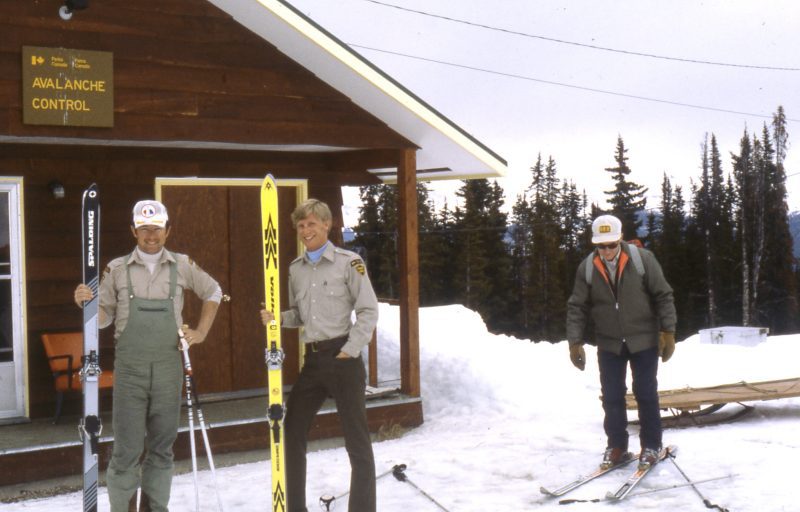
Marv Millasr, John Steele and Toni Klettl. Marmot Basin, Photo courtesy of Terry Damm.
MD: What did you like about being a warden, and what didn’t you like about being a warden?
Tom: (adding a bit to previous question…) …a few of the things with responsibilities…when I was stuck in town, I got involved more with the law enforcement program stuff, and ended up doing court work for a couple of years – the court files, that’s before we had someone like Hilary (Husasr) that managed all that – we used to switch with a warden managing it. Then I did Environmental Assessment stuff, and they used to rotate guys through that for one or two years, and got involved, because of backcountry, with the horsemanship training, and mentoring new wardens, and got involved also with training with firearms, so I became one of the firearms instructors, and that continued until I retired.
MD: (back to Question 7…)
Tom: I think a lot of it was the variety of the job, so in those days, you could get involved with a lot of things….if there was a bear capture, you could get involved with that, so wildlife things, the whole fire program, if there were fires or getting involved with fire schools, and enforcement, if there’s an enforcement issue, and public safety as well. So that variety, and the ability to be involved with any of it, was pretty good, and the camaraderie, with all the guys and gals as well. So that was a good aspect of the job that maybe nowadays is not there. It seems to get more and more specialized, unless you’re in a small park where everybody has to help with a little bit of everything, and everyone has a specialty. But in the big parks, it’s more difficult – you have to really go out of your way to get involved with other aspects of the job.
